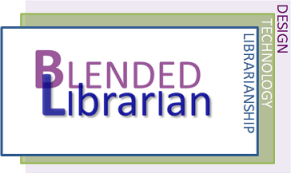A few months ago Kentaro Toyama wrote an essay in the Chronicle of Higher Education titled “Why Technology Will Never Fix Higher Education“. He wrote a related article in The Atlantic. They are based on his book Geek Heresy: Rescuing Social Change from the Cult of Technology.
While Toyama makes good points about the dangers of “solutionism” with technology as the driver for remedying whatever it is that ails our education system, my reaction was that Toyama was adding to a growing ed tech backlash. Educational technology becomes the focus as the problem rather than any inherent failures of the education system. I shared my thoughts in this Library Journal column:
I get Toyama’s point and I think any educational technologist would agree. Just throwing technology at a learning problem is a bad way to solve a more fundamental educational or social problem. In the absence of educator training, technology is likely to go unused, be underutilized, or be used in ways that actually interfere with learning. That’s a lesson many higher education institutions learned when they introduced learning management systems and just expected faculty to start using them to produce better results in the classroom. What they got is expensive ed tech to take attendance and distribute PowerPoint slides. Using MOOCs as his example of failed educational technology may have won Toyama supportive comments from faculty who oppose learning-at-scale, but it was an unfair and unreasonable judgment to pass on all ed tech.
So I was interested to see what Marc Prensky, the educational technology advocate, had to say about Toyama’s book in his regular “New Issues, New Answers” column in the journal Educational Technology (Sept-Oct 2015; in print format only). Like myself, Prensky finds value in Toyama’s basic premises about technology “amplifying” the intentions and actions of people. When technology is applied in inappropriate ways it will amplify poor teaching. Prensky’s observation and primary critique of Toyama’s amplification theory is that it’s based on an old paradigm of education. In Prensky’s new paradigm of education, one is which students achieve real world accomplishments instead of being measured by grades on tests, technology strongly amplifies students ability to achieve more personalized learning:
But just going “back to people” – such as “better” teachers and principals, doing things the old way, even on a more customized and individualized basis – will not solve our problems in tomorrow’s world. Technology, by itself, does not do the whole job of education, but education is becoming harder and harder to do well at scale without technology’s amplifying power.
In higher education we have long lived in two camps. Those who believe that technology can be leveraged to help student’s learn effectively and achieve academic success and those who believe that education technology mostly enriches the companies that sell the technologies. Those in the former camp are indeed sometimes too enthusiastic in pushing technology solutions without a clear rationale for how it is helping students learn. Those in the latter camp demand evidence that technology makes a difference in order to be convinced their teaching methods are in need of change.
Blended librarians bring together skills in research, information technology and instructional design. I believe this positions them to be good leaders at their institutions to collaborate with faculty, educational technologists and those working across the spectrum of academic support services, to identify and implement thoughtful technology applications that will contribute to enhanced student learning. Working with others to integrate library and other technologies (research databases, bibliographic tools, digital learning objects and course materials, OER, etc) into learning spaces will, I think, amplify the educational power of technology in ways that Prensky believes will lead to our students achieving “real-world accomplishment”.
